#harpole
Photo


“Harpole” Necklace,
A 7th century burial discovered in the Northamptonshire village of Harpole contains a gold and gemstone necklace that is the richest ever discovered from the period.
The necklace turned out to be part of the bed burial of a high-status individual who had died between 630 and 670 A.D. The bones have long since disintegrated, but the necklace is evidence that the deceased was female, as is the bed burial itself, a funerary practice almost exclusively reserved for elite women in the Saxon period. She was not wearing the necklace when she was buried. It was placed next to her on the bed.
Few of these burial sites date back earlier than the 7th century AD, when burials of high-status men were more common, and as Christianity took root, later graves rarely featured valuable objects because being buried with ornate jewelry, such as the necklace, was frowned upon by the early Christian Church, said Lyn Blackmore, a senior finds specialist at MOLA.
The woman buried in this exceptional grave was a leader in an early Christian community during the short transitional period between pagan burials with all their grave goods and the burials of established Christianity which explicitly eschewed grave goods. She was wealthy and powerful, likely born to a prominent family and held an important religious position like an abbess.
Text courtesy: The History Blog
#art#design#necklace#jewellery#jewelry#harpole#gold#gemstone#burial#northamptonshire#united kingdom#grave#saxon period#mola#history#style#thehistoryblog
511 notes
·
View notes
Text
Incredible find. I love the ones that shift our knowledge about an area, a subject, a society. Beautiful finds, too.
5 notes
·
View notes
Text

hello i am once again continuing my tradition of redesigning my favorite book's cover
#my art#fishfingersandscarves#the company series#kage baker#in the garden of iden#mendoza (the company series)#nicholas harpole#nicholas (the company series)#illustration#pretty happy with this one! :)#the orange scene is important to me so i always like including references to it
359 notes
·
View notes
Text
Gold-and-garnet cross necklace found buried with wealthy medieval British woman
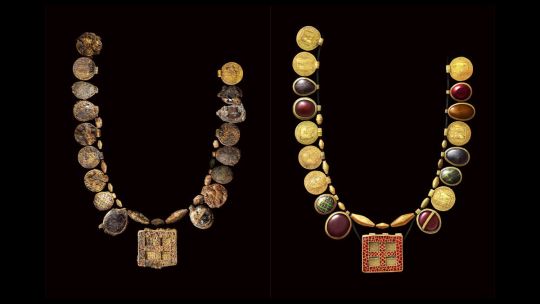
Archaeologists in England have unearthed medieval bling — an elaborate silver cross with human faces and a necklace made of gold with semiprecious gems and Roman coin pendants — in the grave of what might be an early female Christian leader, such as an abbess or potentially even royalty.
The team made the discovery during the groundbreaking for a housing development in Northamptonshire, England. Dating to A.D. 630 to A.D. 670, the items appear to be part of a medieval burial for an elite woman.
The necklace has been cleaned up and reconstructed by Museum of London Archaeology (MOLA) conservators. Thirty different pendants and beads give the jewelry an astonishingly modern look, and its centerpiece is a cross made out of garnets inset in gold. The large, rectangular pendant, however, seems to have been originally part of a hinged clasp and then reused, according to MOLA specialists. Read more.
390 notes
·
View notes
Text
Three by Jherek Bischoff from the album Improvisations
#music#jherek bischoff#morgan henderson#paris hurley#artwork#alex stoddard#jan lankisch#mayumi heider#fort worden#dan harpole cistern#tallinn tallsman and sons#improvisations#improvisation#Bandcamp
14 notes
·
View notes
Photo
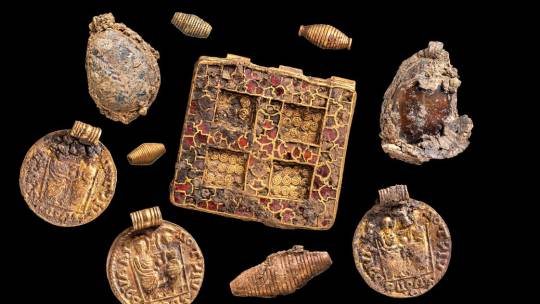


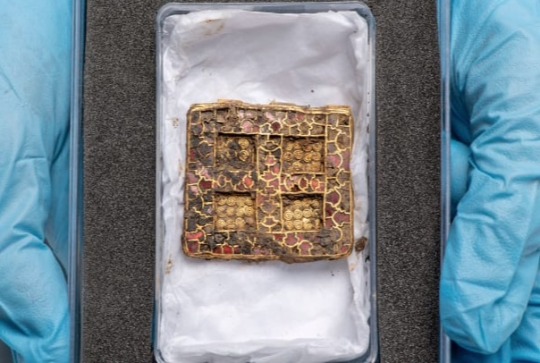

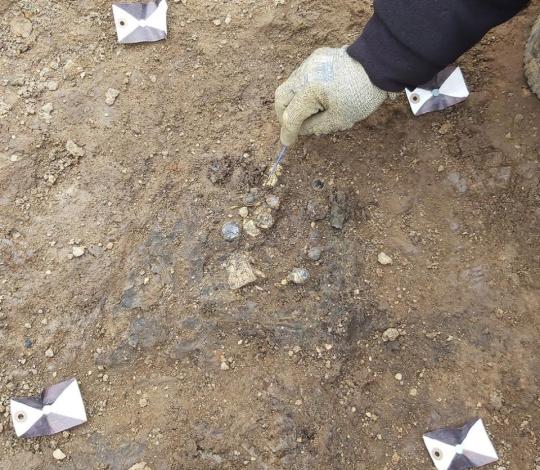
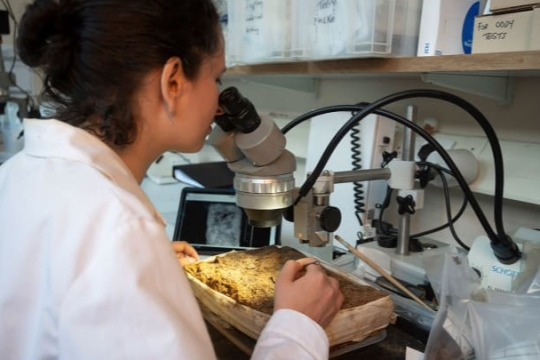
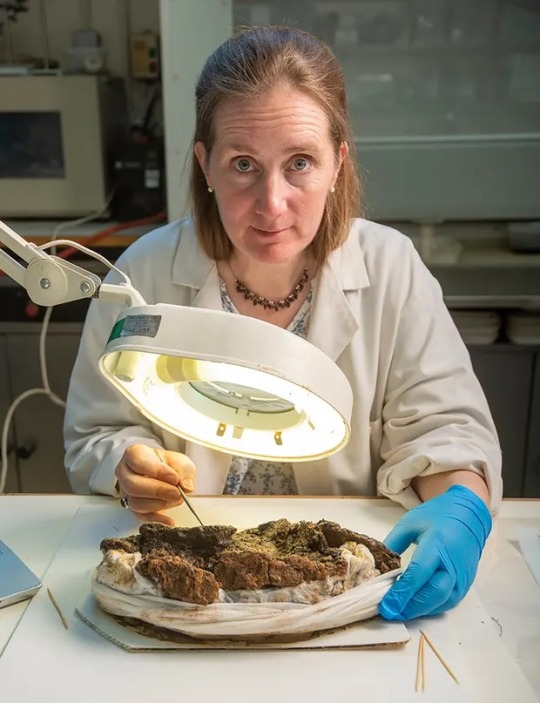

Gold and Jeweled Necklace Found at Burial Site of Powerful Anglo-Saxon Woman in England
Archaeologists have discovered a stunning 1,300-year-old necklace, made of gold, garnets and other semiprecious stones, at an excavation site in central England earmarked for a housing development.
The necklace and other precious objects, called the Harpole Treasure after the local parish in Northamptonshire county where they were unearthed in April, also revealed a powerful role played by some women in Anglo-Saxon England.
The jewelry piece was buried with a woman of high status, who died between 630 AD and 670 AD, according to researchers at the Museum of London Archaeology who unearthed the treasure. The trove also included a relatively large silver cross, two decorated pots and a shallow copper dish.
The Anglo-Saxon bling suggested the woman was powerful in her own right and extremely devout, perhaps an early Christian leader, a princess or an abbess.
The grave site is thought to be the most significant burial from a unique sliver of English history when pagan and Christian beliefs intermingled and women held powerful positions in the early church.
The discovery's importance, the archaeologists said, was of a similar magnitude to that of other monumental Anglo-Saxon treasures unearthed in England, such as Basil Brown's famed find in 1939 at Sutton Hoo, where a warrior king was buried in a ship, and the Staffordshire Hoard of gold and silver artifacts, discovered in 2009 by an amateur metal detectorist in a field in Staffordshire, England.
About a dozen other high-status female burials, known as bed burials, have been discovered elsewhere in England. In some cases, the grave sites included similar necklaces.
Few of these burial sites date back earlier than the 7th century AD, when burials of high-status men were more common, and as Christianity took root, later graves rarely featured valuable objects because being buried with ornate jewelry, such as the necklace, was frowned upon by the early Christian Church, said Lyn Blackmore, a senior finds specialist at MOLA.
"The Harpole Treasure, it's not the richest (bed burial) in terms of the number of artifacts but it is the richest in terms of investment of wealth ... and it has the highest amount of gold and religious symbolism," she said at a news briefing.
X-rays taken of blocks of soil removed from the grave site revealed an ornately decorated but delicate cross cast in silver and mounted on wood. The artifact also had unusual depictions of human faces cast in silver.
Organic matter found in the grave is thought to contain fragments of feathers and textiles like leather, and further study should uncover the nature of the bed burial and whether it had a cover or canopy. The two pots were Frankish in style, Blackmore said, suggesting they came from what is now France or Belgium. The archaeologists hope molecular analysis will allow them to identify the residue in the pots; to date, their analysis has ruled out myrrh.
The skeleton itself was fully decomposed, with the exception of tiny fragments of tooth enamel, but the necklace and other features of the burial convinced the archaeologists that its occupant was female, Blackmore said.
Opulent gold riches
The discovery was made on April 11 but was made public for the first time on Tuesday.
The necklace is the most ostentatious of its type ever to be found in Great Britain, with 30 pendants and beads made of gold, garnets, glass and semiprecious stones strung together along with Roman coins. The striking artifact was found on the penultimate day of an eight-week excavation, said Levente-Bence Balázs, the MOLA site supervisor who first spotted the treasure glinting in the soil.
He was excavating what was thought to be a rubbish pit when he came across the crowns of two teeth, which signaled a burial of some sort. He then saw the rectangular pendant that formed the center of the necklace.
"In 17 years of excavating sites, this was the first time I've found gold. It's not just the artifacts, it's the sheer magnitude of the find," he said.
The excavation work was funded by the house-building company Vistry Group, which said it had waived any rights to the the artifacts that now belong to the state.
he first occupants of the housing development are due to move into their homes in two weeks' time and don't yet know about the treasure that lies beneath their community, said Daniel Oliver, regional technical director at Vistry West Midlands. Nothing has been built on the precise location of the burial, which isn't being made public, he added.
The area where the burial site was found was otherwise unremarkable, with no mounds or other features marking the grave. Archaeologists who worked at the site said they have surveyed the area thoroughly and are confident there is nothing else to find.
Officials at the Museum of London Archaeology said it would take at least two years to study the finds, but hoped the Harpole Treasure would eventually go on public display.
By Katie Hunt.
#Gold and Jeweled Necklace Found at Burial Site of Powerful Anglo-Saxon Woman in England#The Harpole Treasure#Northamptonshire county#ancient tomb#ancient grave#ancient burial#ancient jewelry#ancient artifacts#history#history news#ancient history#ancient culture#ancient civilizations#anglo-saxon#anglo-saxon history#archeology#archeolgst#gold#treasure
46 notes
·
View notes
Photo
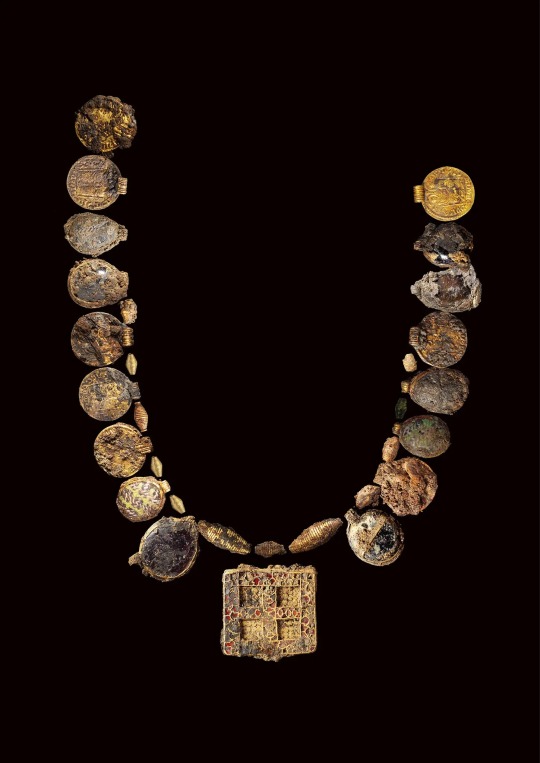
A 1,300-year-old necklace was discovered in the village of Harpole in Northamptonshire, England.
Credit...Hugh Gatt/MOLA
971 notes
·
View notes
Text




hey guys im on a mission to see how many Galactic Adventures™ i can take Duck "Ahiru Arima" PrincessTutu on before i hit a difficulty roadblock. as we go on this journey together, she shall acquire gear that will help her in her travels.
16 notes
·
View notes
Photo

Veronica Lynn by Jason Harpole
Costume by Veronica Lynn
Los Angeles, California
https://www.veronicalynndance.com/
#retro belly dance#vintage belly dance#1970s#70s belly dance#belly dance album#hookah#vintage#retro#groovy#disco#turkish#turkish belly dance#orange#orange belly dance#belly dancer#belly dance#belly dance costume#los angeles#la#belly dance classes#belly dance teacher#fusion belly dance#veronica lynn
25 notes
·
View notes
Photo
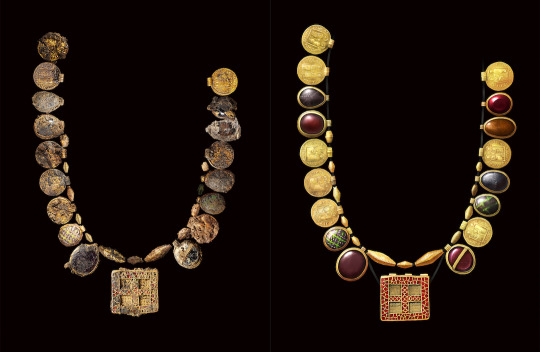
In the unassuming village of Harpole in the center of England’s Northamptonshire county, archaeologists made the discovery of a lifetime when they came across the burial site of an elite woman dating back to between 630 and 670 CE. Earlier this spring, in an excavation project orchestrated by the British construction company Vistry Group, a team of archaeologists from the Museum of London Archaeology (MOLA) examined a future housing development site only to find the minute remains of a woman on a bed accompanied by an extravagant gold necklace glimmering in the soil.
“I was looking through a suspected rubbish pit when I saw teeth,” Levente-Bence Balázs, leader of the dig, regaled during an interview with the Guardian. “Then two gold items appeared out of the earth and glinted at me. These artefacts haven’t seen the light of day for 1,300 years, and to be the first person to see them is indescribable. But even then, we didn’t know quite how special this find was going to be.”
Read the full report.
9 notes
·
View notes
Photo

Read what Centrum.org has to say about K. Van Petten's audio book my label released, for someone. Full text below.
Seattle poet and songwriter K. Van Petten released their debut cassette tape of hybrid music and poetry last week ‘For Someone’ via Hello America Stereo Cassette.
Van Petten created ‘For Someone’ in Port Townsend where they sampled sounds, wrote music, and recorded spoken poetry in residence with Centrum at Fort Worden. Since 1980, the Centrum Artists-In-Residence program has welcomed hundreds of artists and creative thinkers to immerse themselves in the historic charm and natural beauty of Fort Worden, which inspired Van Petten’s project.
“This record was heavily influenced by rituals set to the acoustic qualities of the Pacific Northwest, on the traditional territory of the S’Klallam and Chemakum people,” said Van Petten. “I wanted to bring the feeling of a place, and the in-between of where we listen and where we go, to the listener.”
Alongside sweeping views of the Olympic and Cascade Mountain ranges, miles of wandering beach and forest trails, and a peppering of World War I–era batteries and bunkers, Van Petten captured the feeling of the PNW with the sound of water, waves, birds, boats, trees, and more. Many sounds recorded in an offset of the 2 million-gallon concrete cistern, deemed the Cistern Chapel by Dan Harpole, with its iconic 45-second reverb time.
“I brought my mic with me everywhere I went– on hikes, swims, ferry rides, bus rides– everywhere. I even recorded the sounds of a local saltwater bath house. I found myself interacting with what is sonically possible. How would this leaf sound in water? How does this grass sound different from morning to night?”
Adam Gnade, founder of Hello America Stereo Cassette and author of the viral book ‘After Tonight Everything Will Be Different’ hand selected this release from countless submissions. Gnade defines this emerging genre of music as “talking-songs” in a subset of “audio literary arts”.
“The music- gentle and light as air, a tapestry of earthy sound. The words are illuminating like sunshine after a long night. There is a benevolence to these 11 pieces of writing that will stick with you long after listening. For Someone is in fact for someone for you, for me, for anyone who needs it, and I feel certain a very large number of people need this encouraging, sweet, magical creature of a debut album.” -Adam Gnade
For years, Van Petten has made poetry and music separately, and the thought to combine the two never hit them until walking by a sign outside of Everyday Music is Capitol Hill that said ‘first spoken poetry record since the beats’, and they were talking about Ross Gay’s collaboration with Bon Iver. From there they found Hello America Stereo Cassette,the record label for writers releasing cassettes of poetry. They took what they learned from taking classes with local poets like Bill Carty and CAConrad, and the rest is history.
The cassette tape will be available for purchase alongside cassette players on Hello American Stereo Cassette’s website, and in Seattle at Light in the Attic Records inside of The Gathering Space at KEXP, alongside Caffe Vita.
About K. Van Petten
Van Petten (they/them) is a queer and non-binary poet and songwriter based in Seattle’s Capitol Hill neighborhood. You can find their music under ‘Baddy Gold’ and their poems in zines floating around Seattle coffee shops. They are the founder of Pandemic Poets, a movement of poets writing donation-based poems benefiting COVID relief funds and Not A Press, a small press dedicated to publishing work from underrepresented poets in the PNW. They currently work for local coffee roaster Caffe Vita, and poetry magazine Poetry Northwest.
Baddy Gold is the songwriting project of K. Van Petten. Their debut record ‘Quiet World’ was released independently, followed by an EP of demos from Quiet World called ’EVERYONE HERE IS SOMEWHERE ELSE’, raising funds for Covid Relief and Black Lives Matter. They are currently working on their band’s debut album, set to release in 2023 with Dance Cry Dance.
3 notes
·
View notes
Photo

once again drawing art for a book that only me and like five other people have read
#my art#fishfingersandscarves#the company series#the company dr zeus#in the garden of iden#mendoza (company series)#nicholas harpole#nicholas (company series)#comic#kage baker#cannot resist the urge to draw whilst i reread#i love them so much
350 notes
·
View notes
Text
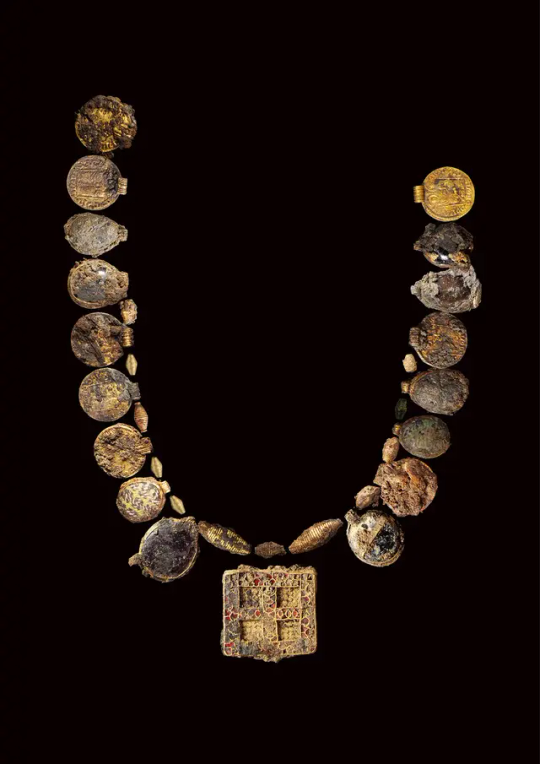
‘Unusual’ and ‘Unique’ Treasures Found in Woman’s 1,300-Year-Old Grave in England
More than 1,300 years ago, a young woman was buried in England — along with various medieval treasures. Now, a year after discovering the ancient grave, experts have unearthed another “unique” artifact from the site.
Archaeologists discovered an “extremely delicate, large silver and gold cross backed with wood,” according to a Dec. 12 news release from the Museum of London Archaeology. The cross was described as an “unusual item,” and it was found in a grave dating between 630 and 670 A.D.
The cross was first identified with an X-ray image, experts said. Then, archaeologists conducted micro-excavations by removing “whole blocks of soil” from the site before examining them in a controlled lab.

Lab excavations revealed the artifact, which is a central cross “decorated with a smaller gold cross,” according to officials. It has five garnets, one large and four smaller, and at the end of each arm is a small circular silver cross with garnet and gold at the center.
Experts said the cross resembles other crosses found in “high status female burials” from around the same time, indicating that the woman in the grave could have “held a very special position within the Christian community.”
“Seeing the central gold and garnet clasp cleaned up is breath-taking,” Simon Mortimer, an archaeology consultant, said in the museum’s news release. “The key is now to reassemble all of the evidence that was buried on that day with this lady – to understand the full significance of who she was, where she was from and how she came to be here and why. Those answers will rewrite our understanding of early Medieval Northamptonshire.”


Archaeologists are now working to determine whether the coins on the necklace were original Roman coins or if they were imitations made as part of the necklace, they said.
The original excavation also revealed several teeth fragments, but officials said further investigations at the site have uncovered more bones, which will give more insight into the deceased.
Since last year, osteologists have discovered “the upper part of a femur, part of the pelvic bone, some vertebrae and part of a hand and wrist,” the museum said. The bones were preserved because they were covered by a “crushed copper dish placed within the grave.”
Early analysis of the skeletal remains indicate that the deceased was likely a young woman, but further tests will be conducted to determine more details, according to experts.
Harpole is in Northamptonshire, which is approximately 70 mile northwest of London.
By Moira Ritter.
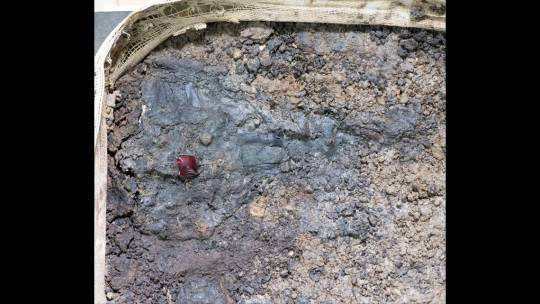
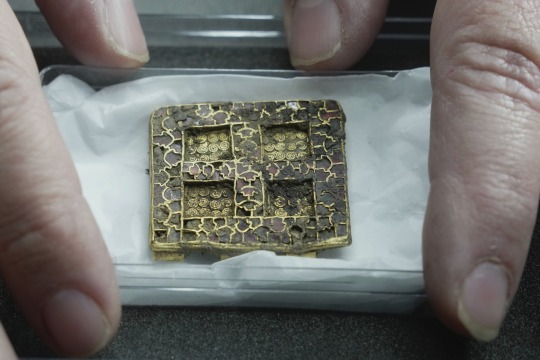
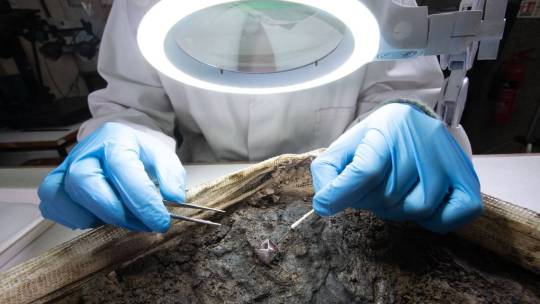


#‘Unusual’ and ‘Unique’ Treasures Found in Woman’s 1300-Year-Old Grave in England#Museum of London Archaeology#high status female burial#ancient grave#ancient tomb#ancient artifacts#archeology#archeolgst#history#history news#ancient history#ancient culture#ancient civilizations#medieval history#ancient jewelry#ancient art
133 notes
·
View notes
Text

The novel "The Machine's Child" by Kage Baker was published for the first time in 2006. It's part of the cycle of the Company.
Alec Checkerfield is determined to free Mendoza from the prison she was locked in by Dr. Zeus Incorporated when she became an inconvenient operative. His clones Nicholas Harpole and Edward Alton Bell-Fairfax, whose personalities were incorporated into Alec's cyborg body, agree but the three of them are as different as possible and this makes it difficult to agree on everything else.
Joseph is watching over the regeneration of Budu, who is like a father to him, after literally recovering his pieces. It's a long and complex process, which leaves him a lot of time for other tasks. Joseph also wants to save Mendoza, who is like a daughter to him, but he also wants to save her from Alec.
0 notes
